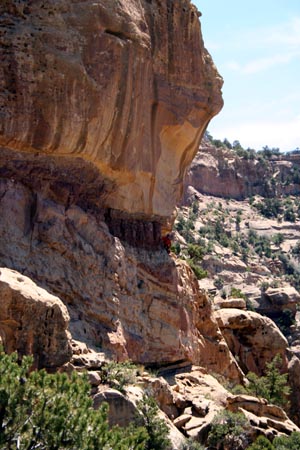
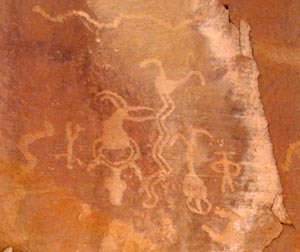 What makes Range Creek Canyon
the world's hottest archeological site (and will probably keep it that way for years to
come)?
What makes Range Creek Canyon
the world's hottest archeological site (and will probably keep it that way for years to
come)?"In my life, I've probably come across six or seven totally pristine archeological sites," said Duncan Metcalfe, one of the chief archeologists in charge of the Range Creek project, at the screening of the KUED documentary Secrets of the Lost Canyon, "until I arrived in Range Creek. We've located over 300 here."
Until recently, Range Creek was private property. The state of Utah purchased the area and limited access is now available. Don't visit Range Creek expecting to find easily accessible or impressive large-scale ruins like in other sites. Mostly what it offers is pit villages barely noticeable to the untrained eye, pictographs, and granaries built on inaccessible cliff walls. One thing that makes Range Creek so valuable is the fact that there's no hurry to excavate before the bulldozers come through. If you visit, PLEASE DO NOT DISTURB any artifacts! Once disturbed, that area loses its ability to tell archeologists the stories of the Freemonts who lived here nearly 1,000 years ago.
Utah Senate President John Valentine was instrumental in the state's purchase of the land. As a member of the Utah County Sheriff Search and Rescue team, he was also instrumental in the team's invitation to assist archeologists in accessing granaries that required technical approaches. This page mainly contains photos from one of those granaries visited in the spring of 2005 on the team's second trip to Range Creek.
Above, right: after climbing about 2,000' from the valley floor, the race is on. Here SAR member Kevin Dickerson tries to approach the Beehive Granary from below, but his ledge peters out 20' too soon. Shaun Roundy leads a team around to the left and rappels to the granary from above.
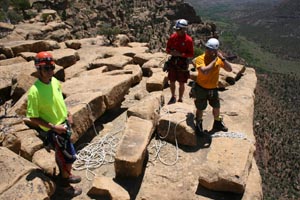
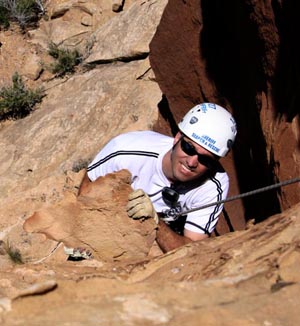 < Kevin and
Darren Dickerson and LLoyd Carter prepare the ropes to rappel.
< Kevin and
Darren Dickerson and LLoyd Carter prepare the ropes to rappel.> Shaun Roundy cleans loose rock from the cliff face before bringing the archeologist, documentary producer and others down.

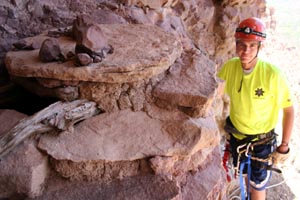 < Shaun enjoys the view while waiting for the others.
< Shaun enjoys the view while waiting for the others.> Darren drops in for a look.
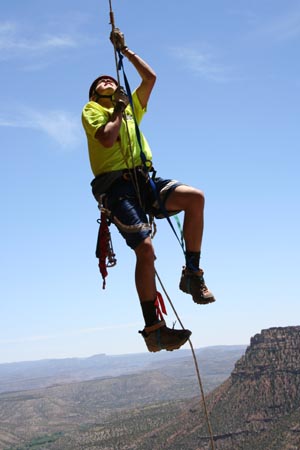 < Up, up and away! Darren ascends back up
the rope.
< Up, up and away! Darren ascends back up
the rope. > A look inside the granary - pine needles and rat droppings.
> Archeologist Renee Barlow measures the granary.
> Renee makes notes about dimensions, layers, construction, different types of clay that indicates repairs made to the granary over different years, etc.
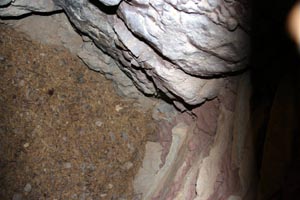
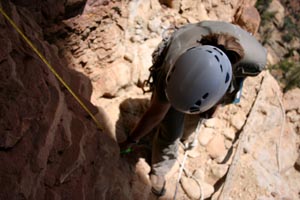
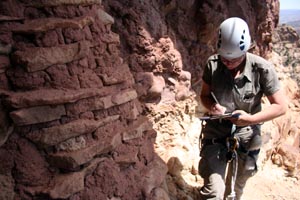
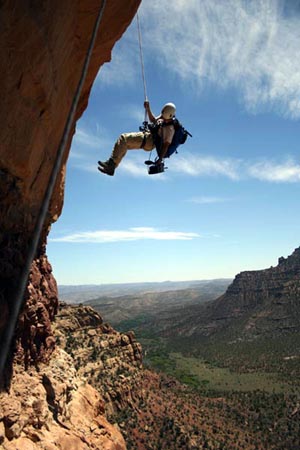 KUED Producer Nancy Green drops in on the
action, camera rolling.
KUED Producer Nancy Green drops in on the
action, camera rolling.At the end of the documentary screening, Nancy was presented with a poster-size print of this shot with the words "I'll never ask you to do anything I'd rather do myself."
> Nancy gets a shot from below before being reeled over to the ledge.
> Senator Valentine helps transport a log for carbon dating (Remember kids - don't do this at home! Do not disturb archeological areas unless you are an authorized archeologist!).
The log dated back about 900 years.
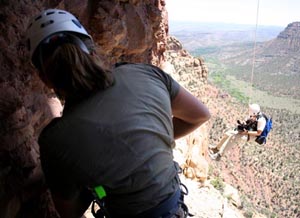
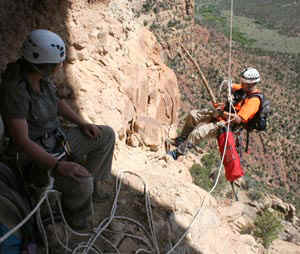
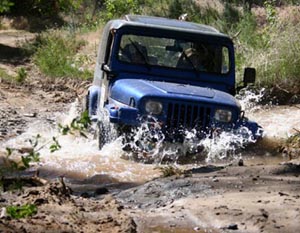
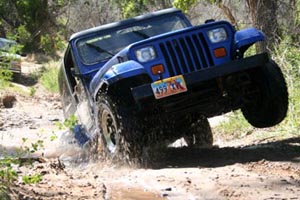 The river was high with spring run off
and impassable farther upcanyon. Here Renee plunges her Jeep through and up a steep bank.
The river was high with spring run off
and impassable farther upcanyon. Here Renee plunges her Jeep through and up a steep bank.
At the documentary screening, Renee was presented the a poster-size print of shot on the right with other inlays and the name "Renee "Indiana" Barlow."
"When are you guys coming back?" she asked Shaun. "As soon as you'll have us," he answered.
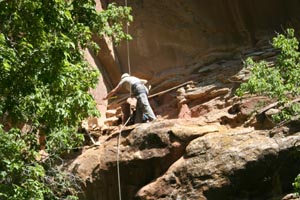 Renee measures another of the granaries we visited that weekend.
Renee measures another of the granaries we visited that weekend.Get more info on the impressive Secrets of the Lost Canyon about the complex politics of Range Creek Canyon and featuring the Beehive Granary and lots of other area photography at http://kued.org/productions/secretsofthelostcanyon/.